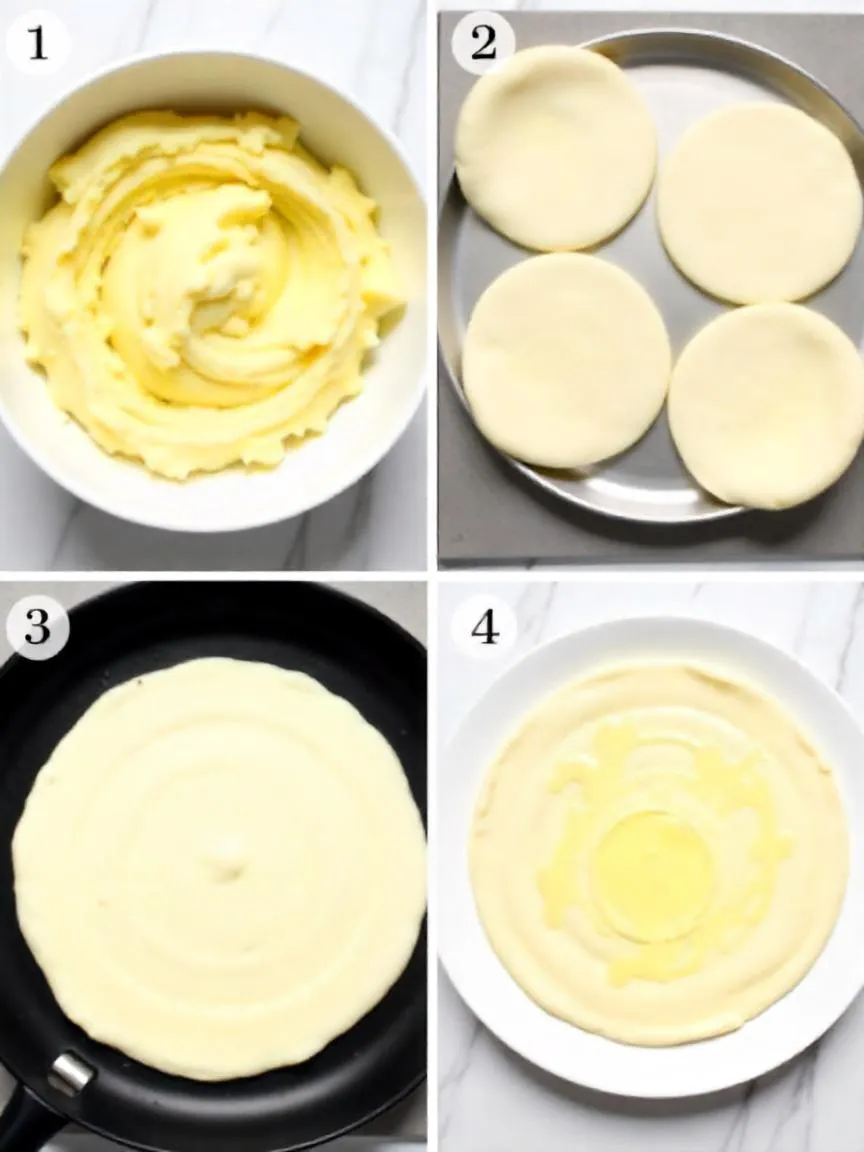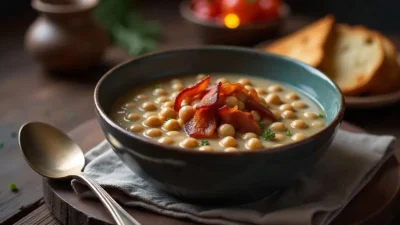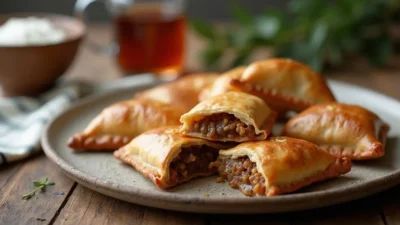Contents
A soft, buttery traditional Norwegian flatbread made from potatoes and flour, perfect for sweet or savory fillings.
Ingredients
- 500 g starchy potatoes (e.g., Russet), peeled and chopped
- 2 tbsp unsalted butter
- ½ tsp salt
- 60 ml heavy cream
- 150 g all-purpose flour, plus more for rolling
Instructions
- Boil the potatoes until fork-tender (about 15–20 minutes). Drain well and mash until completely smooth.
- While still warm, mix in butter, salt, and cream. Let the mixture cool completely (you can chill it for easier handling).
- Stir in the flour gradually until a soft dough forms. Don’t overwork it.
- Divide the dough into 10 balls. On a floured surface, roll each ball into a thin round (like a tortilla).
- Heat a dry skillet or lefse griddle over medium-high. Cook each lefse round for 1–2 minutes per side, or until golden spots appear.
- Stack on a clean towel and cover with another to keep soft.

Notes
Serving Ideas:
- Serve warm with butter and sugar 🧈✨
- Roll with jam or fruit preserves 🍓
- Wrap around smoked salmon and cream cheese 🐟
🥔 A Taste of Simplicity and Tradition
Lefse may look like a humble pancake, but it carries the weight of generations of home cooks, each rolling out their version of this timeless treat. Some Norwegians swear by thin and tender lefse, while others defend their thick and hearty style — and both will insist that theirs is the authentic one. 😄 What unites them all is the joy of making and sharing lefse, especially around the holidays or during cozy weekends at the cabin.🍽️ The Perfect Canvas: Sweet or Savory
Lefse’s mild, buttery taste makes it incredibly versatile. It’s essentially a blank canvas for delicious toppings and fillings:- 🍯 Sweet and simple: Spread with butter, sprinkle with cinnamon and sugar, and fold or roll up.
- 🐟 Savory and fresh: Filled with smoked salmon, sour cream, and dill for a Nordic twist.
- 🧈 Classic Norwegian style: Just butter and a sprinkle of salt — perfect for a snack on the go!






This Lefse recipe sounds amazing! I’m excited to try it. My only question is – how do I know when the dough is “soft” enough? Is there a specific consistency I should be aiming for, or is it more of a feel thing? I’m a bit nervous about overworking it.